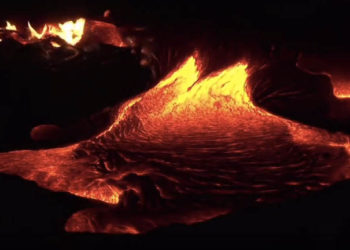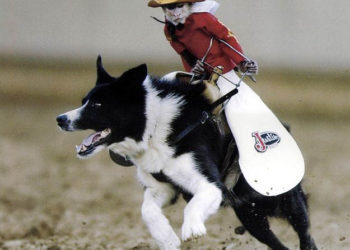As someone who has recently welcomed a new dog to the family (see my Twitter account for occasional photos), canines are on my mind. Our newest addition is going to be big, much bigger than any non-human I’ve lived with, and the video below helps raise a question I’d never considered: we have big cats (lions, tigers, etc.) in the wild, but why don’t we have any equivalent big dogs? We breed large dogs like Great Danes, but these are all variants of the same species as Toy Poodles, and are driven through human breeding efforts. Although large dog species can be found in the fossil record, the Northwestern Wolf is the biggest extant wild dog species, but their size doesn’t come close to that of the bigger cats.
The answer lies in the optimal hunting techniques and the environments in which they’ve evolved. Big cats (with a few exceptions) generally take a “solitary ambush predation” approach, sneaking up on their prey and pouncing. Wild dogs tend to live in more open areas with less cover, so their optimal strategy is endurance hunting, working in packs to exhaust their prey before attacking it. Size is not an asset for endurance hunting, so this has balanced out the optimal size for wild dogs to be smaller than cats. It also has impacted the size and shape of their teeth and claws. Interestingly enough, cats have bigger canines than canines.
So consider this your evolutionary factoid for the day.
Discussion
4 Thoughts on "Why Are There No Big Dogs?"
Bears are big dogs.
Polar bears are cited in the video as another example of the ambush predation method, but bears are no more closely related to dogs than they are any other carnivore (including cats): https://pangopets.com/are-bears-and-dogs-related/
Interesting, but one would think that dogs would evolve to have greater speed than cats, yet cheetahs can outrun any dog.


